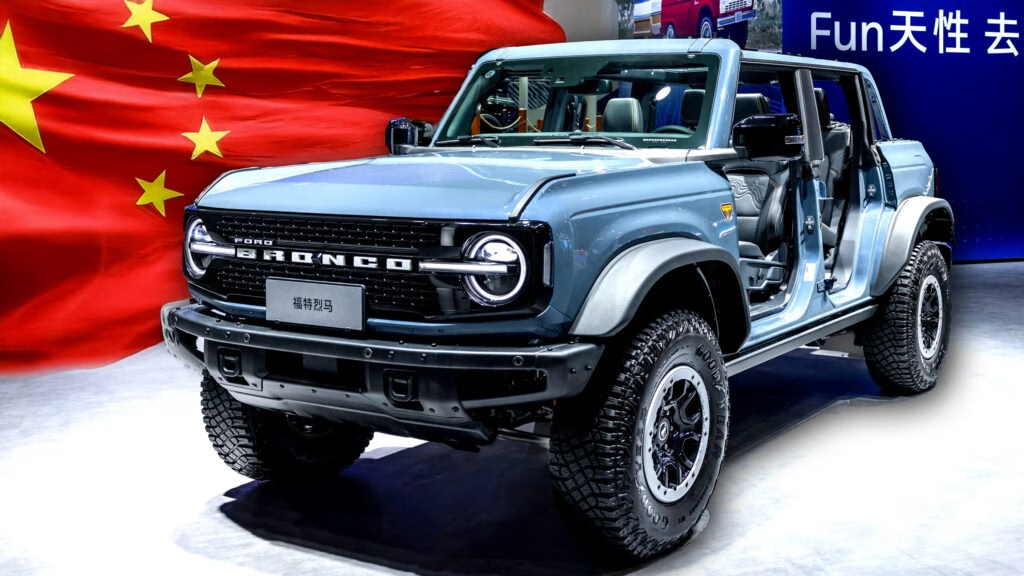Ford’s Decision to Halt Exports to China: What It Means for the Automotive Industry
The automotive landscape is undergoing significant shifts, particularly as global trade tensions escalate. Ford Motor Company has recently made headlines by suspending exports of several key models to China, including the iconic F-150 pickup, the Bronco, and the Mustang. This decision marks a pivotal moment in the ongoing trade war between the United States and China, raising questions about the future of American automakers in one of the world’s largest car markets.
Understanding the Impact of Tariffs on Ford’s Operations
The suspension of exports is a direct response to the retaliatory tariffs imposed by China, which have surged to as high as 150% on American-made vehicles. This dramatic increase in tariffs is a reaction to the previous tariffs levied by the Trump administration on a wide array of Chinese goods. The automotive sector, in particular, has found itself caught in the crossfire, with manufacturers on both sides of the Pacific feeling the pressure.
In 2023, Ford sold approximately 400,000 vehicles in China, but only about 5,500 of those were imported from the U.S. This small segment, while not a major portion of Ford’s overall sales, represents a critical branding opportunity for the company. High-end models like the F-150 Raptor, which can sell for over $100,000 in China, serve as a statement of luxury and American engineering prowess. However, this strategy may now be jeopardized as Ford navigates the complexities of international trade.
Continuing Operations Amidst Export Halts
Despite the halt on vehicle exports, Ford has announced that it will continue to ship U.S.-made engines and transmissions to China. This decision indicates a strategic pivot, allowing Ford to maintain some level of operational continuity in the Chinese market. Interestingly, the Lincoln Nautilus, which is imported from China, remains unaffected by the tariffs, highlighting the nuanced nature of trade regulations and their implications for specific models.
The broader implications of these tariffs extend beyond Ford. An analysis by the Center for Automotive Research suggests that the ongoing tariff situation could lead to an increase in costs for automakers, amounting to approximately $108 billion by 2025. This staggering figure underscores the urgency for manufacturers to reassess their supply chains and pricing strategies in light of fluctuating tariffs.
Navigating Price Increases and Consumer Impact
As Ford grapples with these challenges, internal memos indicate plans to raise prices on new vehicles if the tariff situation persists. Approximately 80% of Ford’s models sold in the U.S. are built domestically, which provides some insulation from the blanket 25% tariffs on imported cars. However, the company is not immune to tariffs on parts manufactured overseas, which could further complicate pricing structures for consumers.
The potential for price increases raises concerns among consumers who may already be feeling the pinch of inflation and rising costs in other sectors. As Ford and other automakers navigate these turbulent waters, the impact on consumer purchasing power and market dynamics will be closely watched.
Looking Ahead: The Future of American Automakers in China
The trade war between the U.S. and China is far from over, and its ramifications will likely continue to shape the automotive industry for years to come. While Ford’s decision to halt exports may seem like a setback, it also presents an opportunity for the company to reevaluate its strategy in China and adapt to the evolving landscape.
As President Trump hinted at possible exemptions to the new tariffs, there remains a glimmer of hope for automakers seeking to stabilize their operations. However, the uncertainty surrounding trade relations and tariff policies will require Ford and its competitors to remain agile and innovative in their approach.
In conclusion, Ford’s suspension of exports to China is a significant development that reflects the broader challenges faced by the automotive industry amidst escalating trade tensions. As the situation evolves, stakeholders will need to stay informed and adaptable to navigate the complexities of international trade and consumer demand.

